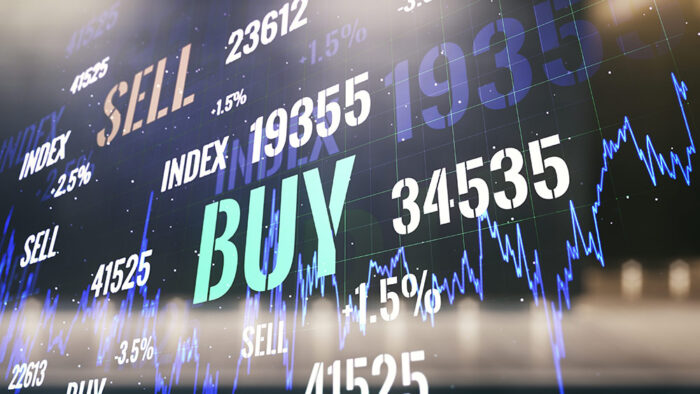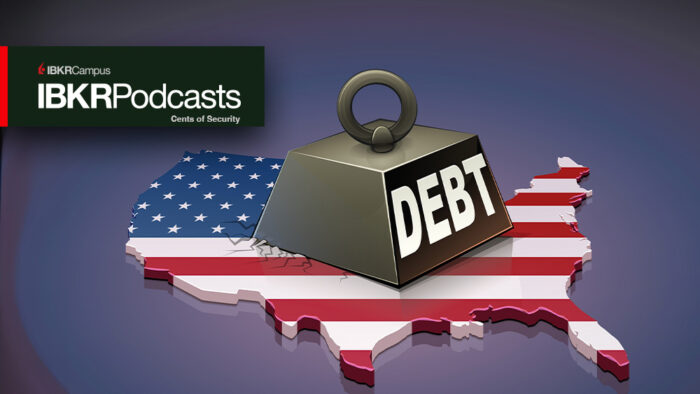There are two main considerations surrounding today’s triple-witching expiration – the day each quarter when equity options, index futures, and futures options all expire. By the time you’re reading this, the futures-related products and longer-term cash-settled index options have all expired – leading to a little volatility around the open – but we still have thousands of equity and ETF options expiring this afternoon.
Another feature of quarterly expirations is that is when S&P Global (SPGI), the keeper of the S&P 500 (SPX), its sub-indices, and a whole host of others around the world, prefers to rebalance it key indexes. The key rebalancing this afternoon will occur in Technology Select Sector Index, which is the benchmark for the $80 billion XLK ETF. Nvidia’s (NVDA) index weight will rise dramatically, mostly at the expense of Apple’s (AAPL). It is expected that the ETF will need to buy about $10 billion of NVDA while selling about $11 of AAPL at today’s close. Considering the outsized importance of mega cap tech stocks overall, and NVDA in particular, upon broad market indices, it is not unreasonable for traders to be wary about outsized movements late in the day.
In the current market environment, when options trading has increasingly come to the forefront of market-related discussions, gamma has become a very popular, though poorly understood topic. It does indeed play an important role in stock market movements, something we discussed as far back as 2021, in articles entitled “Freaky Friday Struck Again — Another SPY Closing Ramp or Gamma Squeeze” and “Expiring Open Interest – Magnet or Slingshot”
It is the second derivative of price – the change in delta in relation to moves in the underlying stocks. Delta is the first derivative and the basis for the bulk of hedging. Gamma becomes asymptotic as we approach expiration – it goes quickly to 0 or infinity, while delta can flip from 0 to 100.
In English, let’s use this example of a $50 strike on a stock trading around $50. If we have a month to go, gamma is a relatively minor concern. If the stock moves from $49.80 to $50.20, the delta might go from, say, .48 to .52 (an at-money option tends to have ~50 delta). A hedger will only need to sell a small amount of shares to hedge if the stock rises. If the option expires in an hour, that delta goes from 0 to 1 as the option rapidly swings from out of the money to in the money, and those traders need to buy/sell much more stock to keep their delta hedged.
Part of the question about gamma is who owns it. Professionals (market makers and the like) tend to delta hedge. That incentivizes them to buy low and sell high as the delta rises and falls. That tends to lock the underlying stock around an expiring strike. Those who are short gamma need to do the expensive opposite. That can provide a slingshot effect.
The proliferation of volatility-selling ETFs has meant that there is a surfeit of expiring options every expiration, and presumably the pros are more likely to be long those options rather than speculators. That then leads to the assumption that the expiring gamma will lock us around strikes. On balance that might be true, but when there are exogenous factors – like a major tech ETF that will need to rebalance the very stocks that have been driving the market — it can overwhelm the mechanical hedging that might normally occur.
This is where today’s rebalance could play an outsized role in creating late volatility. While it is reasonable to assume that professionals are disproportionately large holders of expiring index-related gamma, that is not necessarily the case in NVDA, AAPL and other individual equities. And regardless, options positioning is not sufficient to stand in the way of a multi-billion dollar wave of buying or selling. That could cause either of the two key stocks, or even some others, to race through strikes and exacerbating the moves.
It is also important for traders to refrain from turning off their screens immediately after the market closes. Big directional moves late in the day, especially those that eke across expiring strikes, have a reasonable probability of crossing back through the strike after the close. Those who are long expiring options would want to consider contrary, or special, exercise instructions based on those late movements, while those who are short those options may want to consider hedging the likelihood of contrary assignment. This is a complex set of considerations, so I urge you to read this 2021 article, entitled “Understanding Special Exercises and Pin Risk”.
It is incredibly hard to predict exactly what sort of late volatility may or may not transpire on this otherwise sleepy start-of-summer Friday. But for those of you who are volatility junkies (like me), we may get some long-awaited fun later today.
Join The Conversation
If you have a general question, it may already be covered in our FAQs. If you have an account-specific question or concern, please reach out to Client Services.
Leave a Reply
Disclosure: Interactive Brokers
The analysis in this material is provided for information only and is not and should not be construed as an offer to sell or the solicitation of an offer to buy any security. To the extent that this material discusses general market activity, industry or sector trends or other broad-based economic or political conditions, it should not be construed as research or investment advice. To the extent that it includes references to specific securities, commodities, currencies, or other instruments, those references do not constitute a recommendation by IBKR to buy, sell or hold such investments. This material does not and is not intended to take into account the particular financial conditions, investment objectives or requirements of individual customers. Before acting on this material, you should consider whether it is suitable for your particular circumstances and, as necessary, seek professional advice.
The views and opinions expressed herein are those of the author and do not necessarily reflect the views of Interactive Brokers, its affiliates, or its employees.
Disclosure: Options Trading
Options involve risk and are not suitable for all investors. Multiple leg strategies, including spreads, will incur multiple commission charges. For more information read the "Characteristics and Risks of Standardized Options" also known as the options disclosure document (ODD) or visit ibkr.com/occ
Disclosure: ETFs
Any discussion or mention of an ETF is not to be construed as recommendation, promotion or solicitation. All investors should review and consider associated investment risks, charges and expenses of the investment company or fund prior to investing. Before acting on this material, you should consider whether it is suitable for your particular circumstances and, as necessary, seek professional advice.





























To me all of this makes trading a real headache and in the long term alot of anxiety and loss of money. I know those to whom this article is addressed to will say I am in the ‘dark,’ but since my acc’t was up 54% in ’23 I dont think so.
As of today in 2024, I am earning a good return on my swing trading trades with NVDL. But over the last few days I lost -14%. So, for me, this notion of volatility, which I have difficulty understanding, does not leave me cold, quite the contrary. I wasn’t suspicious of what was coming this Friday. However, with my long experience, I should have suspected it, but, too late…